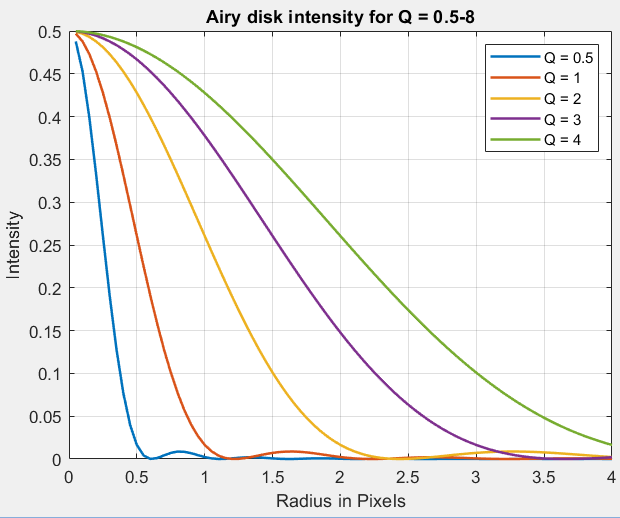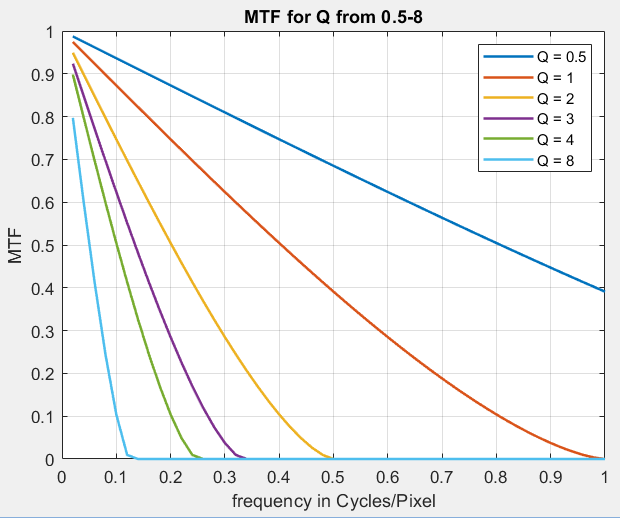...
Diffraction is a fundamental physical property that blurs images. It is caused by the bending of light waves near boundaries. The smaller the aperture (the larger the f-number) or the longer the wavelength, the worse the diffraction blur. Since diffraction is a fundamental physical effect, it is the same for all lenses. For most lenses, performance does not vary significantly at small apertures (large f-numbers), where diffraction is worse than aberrations. The f-number is equal to the lens focal length. f. divided by its aperture diameter, A (f# = f/A). In the classic f-stop (f-number) sequence
f# = { 1 1.4 2 2.8 4 5.6 8 11 16 22 32 45 64 ...}
each stop admits half the light of the previous stop, while the f-stop number is multiplied by the square root of 2 (1.414). When a photographer says, “I increased the exposure by one f-stop,” then the location on the sequence is decreased by one step; e.g., the aperture changes from f/8 to f/5.6.
For most lenses, aberrations tend to be worse at large apertures (small f-numbers), while diffraction gets worse at small apertures (large f-numbers). As a result, lenses tend to have an optimum aperture where they are sharpest, typically around 2 to 3 f-stops below a lens’ maximum aperture (often less for premium lenses). The optimum is fairly broad. |
You can find the optimum aperture by running a batch of images (Imatest SFRplus or eSFR ISO recommended) taken at different apertures, then entering the combined output (a CSV file) into Batchview (Figure 1).
...
IAiry and MTF as functions of Q are plotted below.
Defocus
Defocus (or misfocus or focus error) blurs the image — taking a bite out of MTF. Defocus is a large subject that we can only touch on.
...

